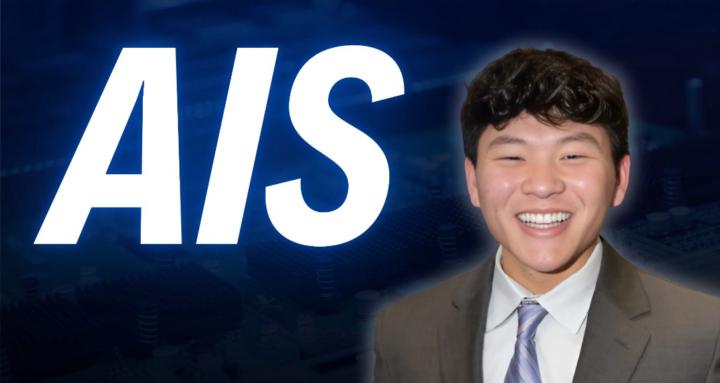🔥
2h (edited) • General Discussion 💬
AI Capabilities Are Doubling Every 5 Months. Here's What You Can Do...
Nathan Benaich just released the State of AI 2025 report with data from 1,200 AI practitioners, and the numbers reveal something most people are completely missing.
76% of professionals are paying for AI tools out of their own pockets. Not waiting for company approval. Not asking for permission. They're spending $200+ per month because they understand something critical.
The barrier to winning with AI isn't the technology. It's knowing exactly what to do with it.
When surveyed about what stops them from scaling AI, the top answer was simple: the upfront time to configure systems and make them work reliably. Translation? People know it's powerful but don't know how to actually use it effectively.
That's your opening. That's where you win.
Let me show you the 20% that matters.
The Speed Reality
AI task completion capabilities are doubling every 5 to 7 months. Not years. Months. This isn't a projection. MITRE research confirmed it across general domains. One researcher found it's actually every 5 months.
What this means: The AI that feels pretty good today will be twice as capable by summer. While you're figuring out if you should start, someone in your field is already six months ahead. And that gap compounds.
Here's what's actually happening. One person with zero coding ability just sold their AI-built company for $100 million. Chess grandmasters are learning brand new strategies from AI that improve their gameplay. Scientists are using AI agents to discover novel gene candidates for diseases.
The people winning aren't AI engineers. They're using AI as an expert team, research assistant, and strategic advisor all in one.
Why Most People Are Stuck at 20% Capacity
The survey revealed the most frequent enterprise use cases: coding, content generation, and documentation. Basic stuff. That's where 95% of daily AI users stop.
But here's what top performers figured out. They use AI for three things that create exponential advantages:
One. Compressing expertise acquisition from months into hours.
Two. Identifying blind spots in their work that they can't see themselves.
Three. Scaling their output to team-level capacity as solo operators.
Let me give you the exact playbook.
Prompt 1: Compress Learning Time
When you need to become competent in a new area fast, most people waste weeks reading random articles. Top performers do this:
"I need to become highly competent in [specific topic] in the next 3 hours for [specific reason]. Give me: 1) The critical 20% of concepts that explain 80% of results in this field, 2) The 3 most important mental models experts use that beginners miss, 3) The biggest mistakes people make when learning this, 4) One counterintuitive insight that separates good from great. Then create 3 scenarios to test my understanding."
This is what separates people who spend months learning from people who reach working competence in days.
Prompt 2: Eliminate Your Blind Spots
DeepMind's AlphaZero taught chess grandmasters—people at the absolute peak—new concepts that improved their game. If AI can teach grandmasters, it can find your blind spots.
"I'm working on [specific project]. You're a world-class expert in [field] who's brutally honest. First, ask me 5 diagnostic questions about my approach, audience, and goals. Based on my answers, identify the 3 biggest weaknesses in my approach that I'm probably not seeing because I'm too close to it. For each weakness, explain why it matters and give me one specific way to fix it that will make my work stand out."
While your competition makes their work 10% better, you're fixing fundamental issues they can't even see.
Prompt 3: Scale Solo to Team-Level Output
The report shows better capabilities for less cost. The trend is clear. You can now do what previously required a team.
"I want to accomplish [specific goal] as a solo operator. Break this into key functions needed: research, strategy, creation, distribution, optimization. For each function: 1) Show me how to use AI to handle 70-80% of the work, 2) Tell me what I must do myself that AI can't handle yet, 3) Give me the specific approach that works best for this function, 4) Warn me about common mistakes people make trying to automate this."
The Urgency Nobody's Talking About
Entry-level hiring has dropped significantly while experienced workers stay employed. Why? Experienced workers have tacit knowledge. Context. Pattern recognition that AI can't replace yet.
But here's the catch. If you're not actively building expertise and using AI to accelerate it, you're becoming the entry-level hire. The person who does basic tasks that AI increasingly handles.
The survey shows coding was the most surprising use case. People are amazed at the complexity of applications built autonomously with AI. The most frequent enterprise use cases are all things AI handles well now.
What This Actually Means for You
China's Alibaba just released Qwen models that are becoming the default for developers worldwide. Downloads are skyrocketing. OpenAI's lead is narrowing. The competition isn't slowing down.
The report predicts within 12 months an AI agent will make a Nobel Prize-level scientific discovery. Models are already hitting International Math Olympiad gold medal performance.
While everyone debates superintelligence and trillion-dollar data centers, the actual tools you need are getting cheaper and more accessible every day.
AI-first startups are seeing revenue acceleration that crushes traditional peers. Not because they have better technology. Because they figured out how to use it as a force multiplier while everyone else was still testing the basics.
The Real Competitive Edge
The data is unambiguous. 95% daily usage. 76% paying out of pocket. 70% of companies increasing AI budgets. Capabilities doubling every 5 months.
The practitioners surveyed said the biggest barriers are solvable: configuration time, privacy questions, expertise gaps. These aren't technical problems. They're knowledge problems.
Which means the window is right now. Before these become solved problems. Before the gap becomes insurmountable.
You can spend the next month thinking about it, or you can spend the next week using those three prompts to build advantages that compound.
Six months from now, you'll either be the person who saw this coming and acted, or the person watching someone else in your role who figured it out first.
The capabilities are doubling every 5 months whether you use them or not.
What's one task you do regularly that takes 3+ hours? Start there. Use prompt 2 to find your blind spots in that task. Then use prompt 3 to figure out how to scale it.
That's how you turn reading a report into a competitive advantage.
Source: The State of AI 2025 Report by Nathan Benaich and Air Street Capital
9
11 comments

skool.com/ai-automation-society
A community for mastering AI-driven automation and AI agents. Learn, collaborate, and optimize your workflows!
Powered by




